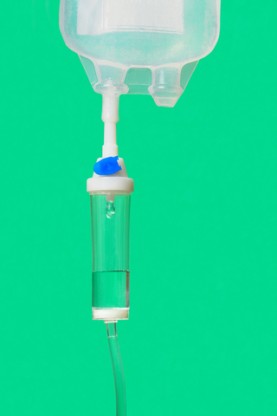IV Chelation Therapy: Finding a Doctor Who Will Test for and Treat Heavy Metal Toxicity
 Excessive toxic metal exposure from the air, food, water, dental amalgams, and other sources is becoming a recognized and established underlying cause of both acute and chronic disease. With ongoing medical research validating the link between chronic diseases like heart disease and environmental exposure to toxic metals, it is more important than ever for doctors and patients to be well-informed about the detrimental effects of toxic metals and the potential treatments for heavy metal toxicity, including IV chelation therapy.
Excessive toxic metal exposure from the air, food, water, dental amalgams, and other sources is becoming a recognized and established underlying cause of both acute and chronic disease. With ongoing medical research validating the link between chronic diseases like heart disease and environmental exposure to toxic metals, it is more important than ever for doctors and patients to be well-informed about the detrimental effects of toxic metals and the potential treatments for heavy metal toxicity, including IV chelation therapy.
What is chelation?
The Greek word “chele” means claw. Chelation is the binding of metals (like lead) or minerals (like calcium) to a protein “chelator” in a pincer-like fashion, forming a ring-like structure. Chelation is an important treatment protocol for the removal of toxic metals such as lead and mercury from the body’s bloodstream and tissues. Natural chelation, although weak, regularly occurs from eating certain foods such as onions and garlic. A stronger chelation effect can be induced when certain supplements, such as some amino acids, are taken orally. The strongest chelation effect is achieved with intravenous chelation.
What is chelation used for?
Intravenous chelation therapy is used and accepted within conventional medicine as an FDA-approved treatment for the removal of toxic minerals such as lead from the body in cases of severe poisoning. However, it is also used in a less conventional way: the repeated administration of intravenous chelating agents is used to reduce blood vessel inflammation caused by specific toxic metals and to reduce the body’s total load of those metals, especially lead. It has been shown that the risk of dying from cardiovascular events begins when a person’s blood level of lead is still well within the established normal reference range.[1]
IV chelation therapy often utilizes the chelating agent disodium ethylene diamine tetraacetic acid (EDTA) and is sometimes referred to as EDTA chelation. EDTA chelation is being used in the treatment of all forms of atherosclerotic cardiovascular disease, especially heart disease and peripheral artery disease. Although there is less published research in these areas, chelation therapy is also being used to treat macular degeneration; osteoporosis; mild to moderate Alzheimer’s disease associated with heavy metal toxicity; autoimmune diseases, especially scleroderma; and fibromyalgia or chronic fatigue syndrome with high levels of toxic metals detected with a challenge test.[4]
Does chelation really work?
The most recent study to examine the effects of EDTA chelation therapy showed compelling value for preventing cardiovascular events, especially in people with diabetes who had a history of heart attack. The controversial Trial to Assess Chelation Therapy, or TACT, found an amazing 40% reduction in total mortality, 40% reduction in recurrent heart attacks, and about a 50% reduction in overall mortality in patients with diabetes who had previously suffered from a heart attack.[2] TACT was a large, randomized, placebo-controlled study published in JAMA that randomized patients to a series of IV chelation using EDTA or placebo.[3]
What kinds of doctors offer IV chelation therapy?
Doctors must be well-trained in chelation therapy in order to utilize the correct tests and treatments. Testing for toxic metal exposure is not straightforward since blood tests typically identify only those with severe and acute toxicity but fail to identify those with toxic metals stored in the tissues due to chronic exposure. Applying the appropriate chelating agent to properly treat toxic metal accumulation is also not a straightforward endeavor. Different chelating agents bind with different affinity to different metals. Some chelating agents may be taken orally, while others are administered intravenously.
Chelation therapy is not taught in conventional medical school but rather through various professional medical organizations. The most recognized leader in educating and certifying healthcare professionals, including MDs and NDs, in chelation therapy is the American College for the Advancement of Medicine (ACAM). ACAM’s chelation therapy training teaches doctors how to diagnose and treat patients with heavy metal toxicity as well as how to use diet and nutrients to optimize toxic metal chelation strategies and protocols.
[1] ACAM website. Detoxification / IV Chelation. Downloaded Jan 7, 2014.
[2] Medscape Heartwire. 2013, Nov 19. ‘Extraordinary’ Chelation Effects…. Downloaded Jan 7, 2014.
[3] JAMA. 2013;309(12):1241-1250.
[4] Townsend Ltr. 2013 Aug/Sept. Report on the Proceedings of a Summit…. Downloaded Jan 7, 2014.
Originally published in 2013, this post has been updated by the editors of University Health News.


 Vegan Diet Better Than Omnivore Diet for Cardiovascular Health
Vegan Diet Better Than Omnivore Diet for Cardiovascular Health  10 Terrific Natural Diuretics
10 Terrific Natural Diuretics  Ask the EN Experts January 2024
Ask the EN Experts January 2024 